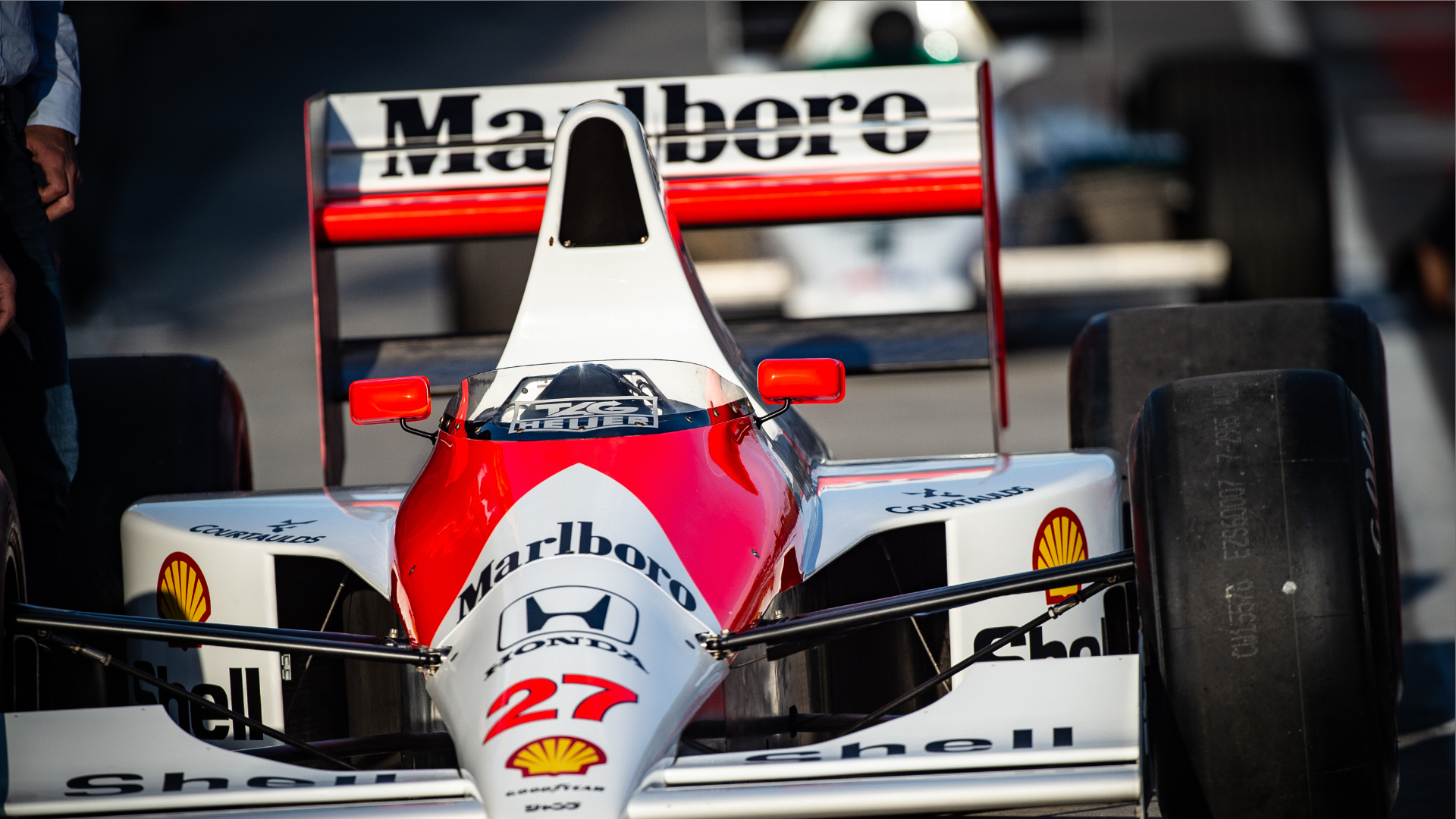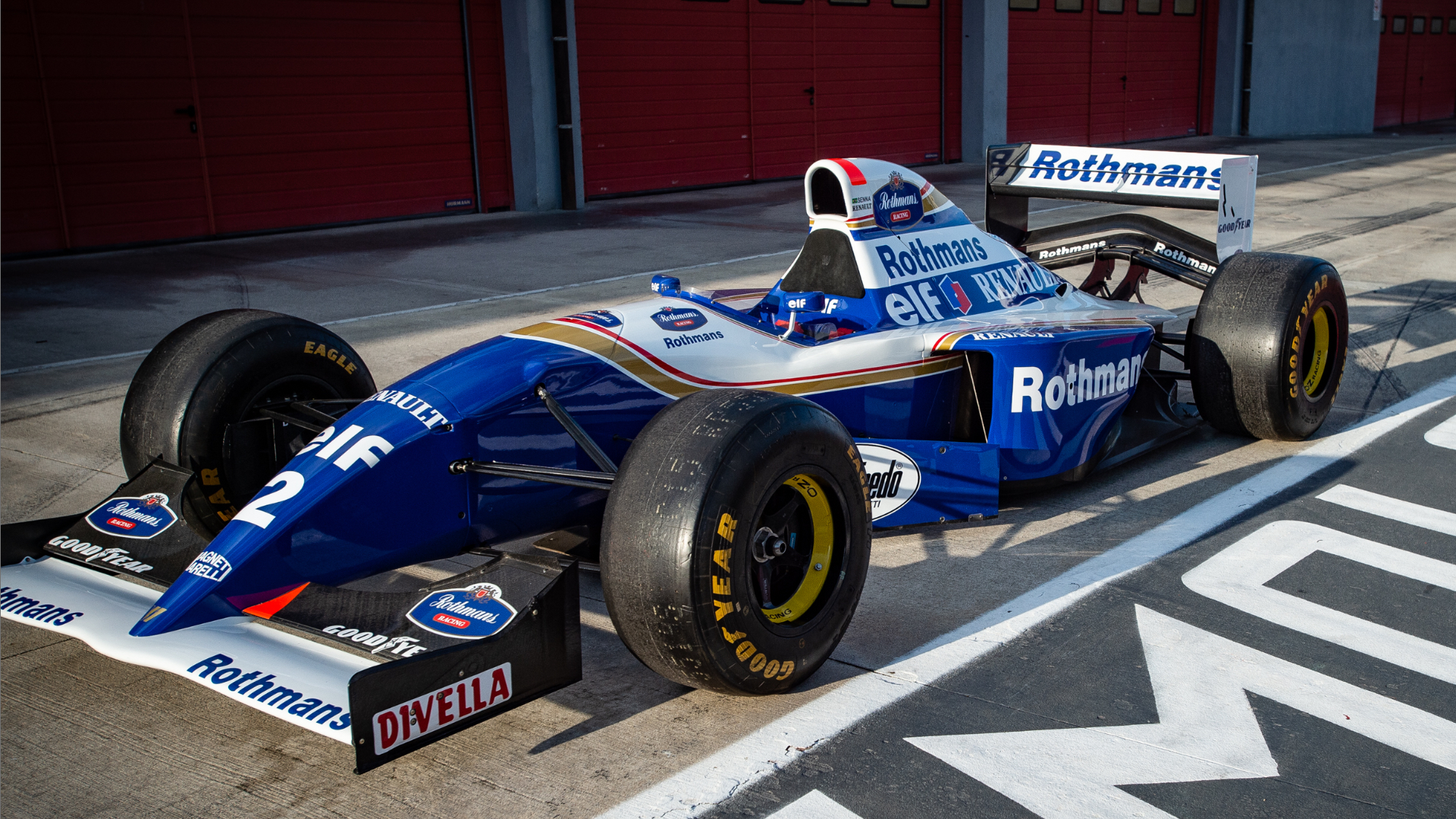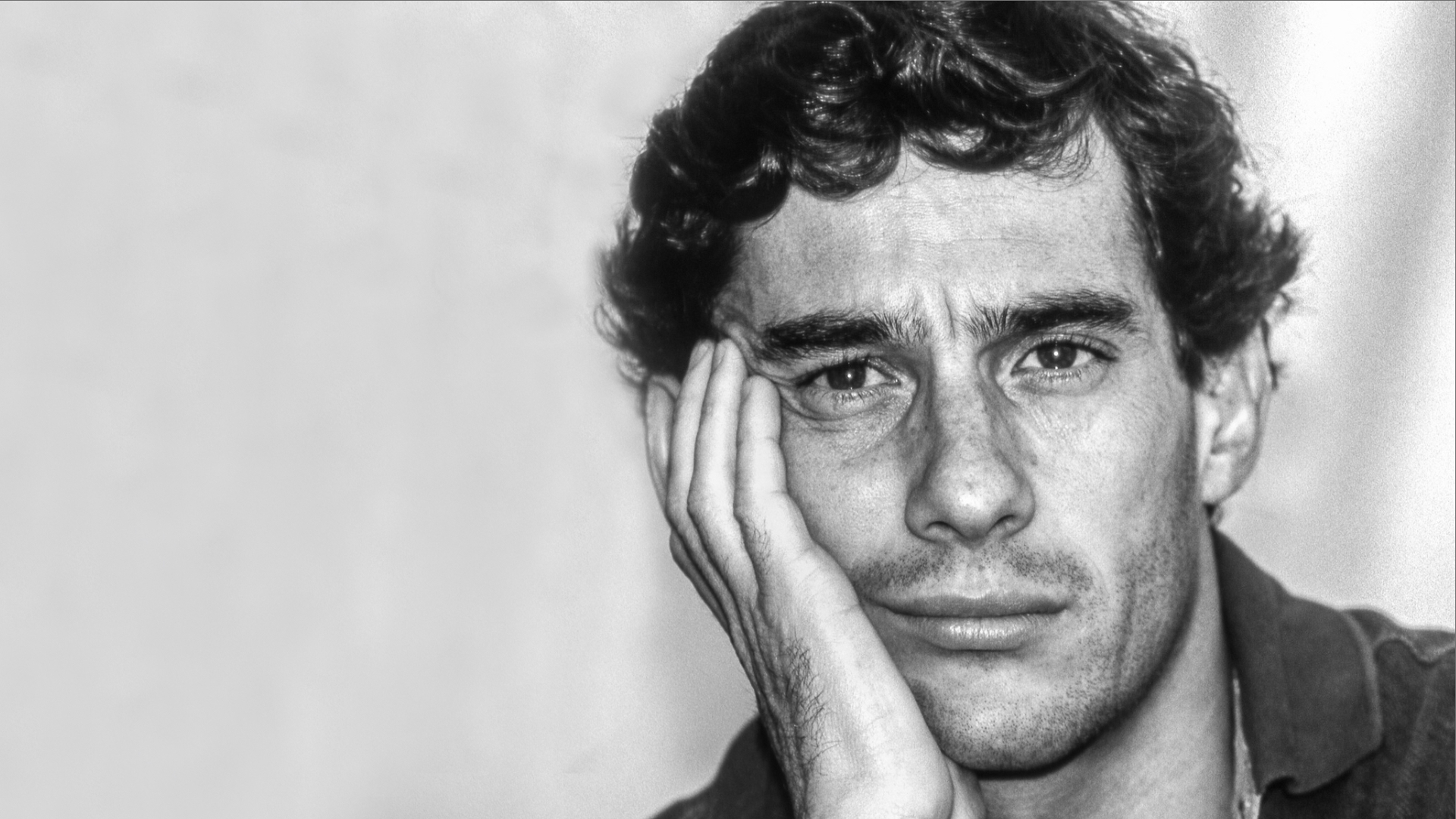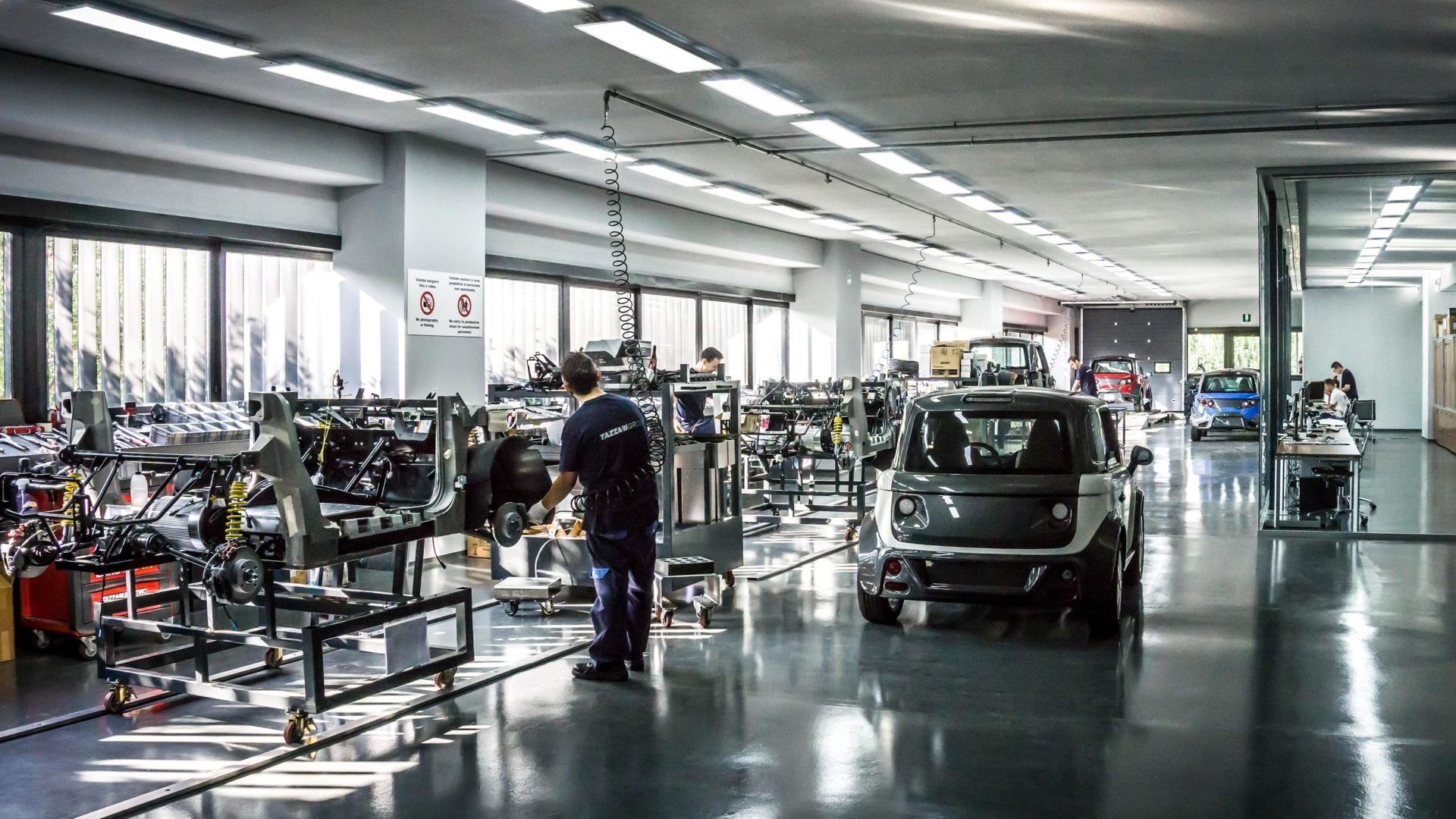Motor Valley Stories
Ayrton Senna and the Imola Circuit: the legend behind the story.
The relationship between Ayrton Senna and the International Enzo and Dino Ferrari Autodrome in Imola was a special one. Even before that last, fatal, San Marino Grand Prix on 1 May 1994, the Imola circuit had been the setting for some of the most intense moments of the Brazilian driver’s sporting career. Some beautiful, some unpleasant, others still, as they often were, controversial.
Twenty-five years after that tragic event, season after season, Grand Prix after Grand Prix, we retrace the story of Ayrton’s relationship with the Imola track. A bond that was born and strengthened throughout the Brazilian driver’s personal and sporting life, forever etched into our minds.
1984-1987. Senna, a champion is born.
1984. False start.
After impressing insiders in Formula Ford and in Formula 3, Ayrton Senna approached Formula 1. He was hired by the Toleman-Hart team, because the greatest teams, including Williams with whom he had been invited to play a test under patron Frank Williams request, were already full. The car was certainly not among the most competitive in the championship. Nevertheless, Ayrton brought the small English team to achieve results they had never obtained before. Not at the San Marino Grand Prix, at least. In the homeland of Italian motorsport, stage 4 of the season, Senna arrived very motivated and determined to make his mark. However, a problem with his Toleman engine kept him from running fast on Friday. Saturday qualifications were marked by a very strong and unexpected time. Senna was the fastest on the wet track. The world enjoyed their first glimpse of his incredible talent, but his time was still far off the previous day, and so Senna, for the first and only time in his career, didn’t manage to qualify for a race.
1985. The first pole of a record series.
Ayrton, having moved to Lotus Renault, arrived at the San Marino GP fresh from his first success in Formula 1, obtained at Estoril in an amazing wet race in which he doubled all the other drivers on the track. Yes, apart from Michele Alboreto, who came second more than a minute after. His abilities were now obvious. He had the best time in the Saturday practice. This would be the first of eight pole positions at the Imola Circuit, an absolute record equaled then only by Schumacher (Suzuka) and Hamilton (Australia). In the race, Ayrton drove without faults and remained firm in the lead, but at 4 laps from the end, when he seemed to be heading towards an amazing double win, an engine anomaly left him prematurely without petrol. Prost won, but was disqualified for the non-compliant weight of his car, and so his victory ended with Elio De Angelis’ win, his teammate at Lotus Renault.

1986. A new start.
Senna came to Imola with a higher ranking than other drivers, thanks to his second place obtained in the home Grand Prix and to the incredible victory in Spain in a sprint with Mansell, beaten by just 14 thousandths. Ayrton started again in pole position, the tenth of his career, ahead of the two Williams of Piquet and Mansell. At the start, however, he was overtaken by his compatriot, and on lap 11 he was forced to quit the race due to a mechanical problem.
1987. The first podium.
With his Honda motorized Lotus instead of Renault, Senna won his third consecutive pole position on the circuit, this time ahead of Mansell and Prost. Even the warm up gave him a good feeling: “If everything works as we expect, we’ll let them eat the dust” he proclaimed in the pits. The race, however, revealed the limits of Lotus compared to the cars of other great teams. Senna was overtaken on the first lap by Mansell and on the sixth by Prost. He then engaged in an intense duel with the Ferraris of Berger and Alboreto, and thanks to Prost pulling out he managed to finish the race in second place, behind Mansell, succeeding in any case in making his prophecy come true.
1988-1991. Only Senna can beat Senna.
1988. Total domination.
With the move to McLaren, Senna finally found himself behind the wheel of a car on par with his talent. With 15 victories out of 16 Grand Prix races, the Honda motorized MP4 / 4 will go down in history as one of the most successful Formula 1 cars. Senna’s teammate was “Professor” Prost, the best driver in the championship and the opponent that Senna had set out to beat since his arrival in the top category. The two qualified for the front row, inflicting a good three seconds on Piquet’s Lotus, third place. In the race, Ayrton dominated from the first to the last corner, winning his first Imola Grand Prix. That was also the first out of 35 wins driving the McLaren, and the first of eight seasonal triumphs that would make him World Champion for the first time in his career.

1989. The beginning of a historic rivalry.
Continuing in the wake of the previous season, McLaren confirmed its superiority with Senna’s pole position and Prost’s second place in qualifying. The next day, in the race, a terrible accident for Berger at the Tamburello bend avoided dramatic consequences thanks to the timely intervention by the “Lions” of the CEA. After a long interruption there was a second start, in which Prost managed to take the lead. But immediately afterwards, at the Tosa turn, Senna overtook his teammate, contravening the non-aggression pact on the first lap of the race stipulated between the two at the start of the season. Senna flew in and went on to win the Grand Prix. Prost came in second forty seconds after. When he arrived in the pits, he was furious and the Professor railed against his companion. He threatened McLaren that he would not run the next race without an official apology from Senna, to which Senna replied that he had no intention of participating in “show” competitions. This was the beginning of the great Prost-Senna rivalry, one of the most intense and spectacular duels in the history of sport, which led to the famous and controversial Suzuka episode, the disqualification of Senna and subsequently Prost, world champion for the third time in his career, at Ferrari.
1990. A painless withdrawal.
The Villeneuve Award, which the city of San Marino honored to Ayrton Senna on Saturday, did not bring good luck to the Brazilian driver. Senna got the pole, the sixth consecutive in the Imola circuit. On the third lap, however, when he had already distanced himself from his pursuers, the breaking of a rim forced him to stop the race. Riccardo Patrese won on Williams, with teammate Berger and Italian Alessandro Nannini (Benetton) on the podium. This episode, however, did not prevent Senna from obtaining his second world champion triumph, which came on October 21st 1990 at Suzuka after yet another clash with Prost, a remake of what happened the previous year which ended this time with the final triumph of the Brazilian.

1991. The king is back.
Senna’s start to the season was exciting. He won the first four races, including the San Marino Grand Prix, where he started in pole position for the seventh consecutive time in the circuit and for the fifty-fifth time in his career. The Brazilian won ahead of his teammate Berger, about a second and a half away, and Finn Lehto, voiced by both McLarens. This was the 29th career victory for the Brazilian ace, who at the end of the season, at the end of the umpteenth duel with Prost, would become world champion for the third time, the second consecutive.
1992-1994. Senna and Williams, a complicated story.
1992. The wind has changed.
After seven years of consecutive pole positions, the XII edition of the San Marino Grand Prix saw Senna starting third behind Mansell and Patrese, with a delay of over one second by the British driver. The Williams FW14B, powered by Renault and equipped with cutting-edge electronics, outperformed the competition and dominated the entire season, so much so as to be called “the car from another planet”. Not even Senna could do anything against the overwhelming power of Mansell, who took it in almost 50 seconds and had the third of five consecutive victories that would launch him towards his first world title.
1993. The end of an era.
After meditating on the transition to Formula CART and even contemplating retirement from racing, Senna, with a one-million-dollar coin-per-race contract, returns to the lead of a precarious McLaren powered Ford, bringing it – thanks to its class – to impossible results . He won the grand prize at home in Brazil, and triumphed with a memorable performance at Donington, in a race heavily marked by rain and twists. At Imola, however, the Williams of Alain Prost, who returned after a sabbatical year, and the Briton Damon Hill were still dominating. Senna came fourth behind the young Michael Schumacher, with whom one year ago he happened to run into some skirmishes, the kind that only great drivers exchange. In the race, Senna managed to climb up to second place, but on lap 42 his car suffered hydraulic problems and was forced to pull out.

1994. The end of it all.
After the telenovela of the previous months, Senna arrived at the Williams team, where he replaced his friend / enemy Alain Prost, who retired for good after winning the fourth world title. The strongest driver arrived in the best car of the circuit, and went to compete for that team with which he had had his debut in a Formula 1 race, in the July 1983 test at Donington Park. The new regulation, however, enforced by the FIA to increase the competitiveness of the championship, actually prohibited all the electronic devices that had allowed the FW14B and the FW15C to dominate in the two previous seasons. Therefore Senna found himself driving a car that was not very competitive, which was especially lacking in reliability.
In the first two races Senna got two poles but also as many retreats. Imola seemed the perfect location for redemption, but the incidents of Barrichello in Friday practice and Ratzenberger in Saturday’s qualifying deeply marked him. Senna showed up in pole position, the 65th of his career, a record that would be beaten only by Schumacher first and then Hamilton. The atmosphere, already dreary for the events of the pre-race days, became even heavier immediately after the start, with an accident on the starting grid whose debris ended up injuring several spectators in the stands. After five laps driven by the safety car, the race resumed in an increasingly distressed climate. Senna, who hid an Austrian flag in the cockpit to dedicate the eventual victory to Ratzenberger, remained firm in first position and in the first lap after the restart he obtained an amazing time.
At 14.18 the seventh lap began, ahead of Michael Schumacher. After covering the long straight at more than 300 kmph he was preparing to face the Tamburello curve, the fastest in the whole world, when the failure of the steering column made him lose control of the car and led him to crash at high speed against the wall on the track. The impact was tremendous. The strut of the right front suspension broke and entered his helmet, breaking his right temporal region and causing serious injuries. The team led by the FIA doctor and his personal friend Sid Watkins rushed in and extracted him from the cockpit, alive but unconscious. In desperate conditions, the driver iwas transported by helicopter to the Maggiore Hospital in Bologna and there he was admitted to the intensive care unit, where at 6.40 pm, after unsuccessful attempts to save his life, he was declared dead.
1994-present. Ayrton Senna, immortal legend.

The passing of the driver marked the birth of a legend. A legend that is celebrated in the brand new MAICC – Autodromo Imola Multimedia Museum Checco Costa with the exhibition “Ayrton Magico. The soul beyond the limits”: a unique, interactive and engaging experience, which through the events, words and objects relating to the Brazilian ace allows visitors to immerse themselves in the sporting and human journey of Ayrton Senna. A unique concentration of talent, dedication and faith. A legend that goes beyond the boundaries of time and space, and that after twenty-five years on from that tragic day, continues to be stronger than ever.
Photo credits: Angelo Orsi, Dima Moroz (1 – 2), Gabriele Pierfederici, Carmelo DG, Martin Lee.









